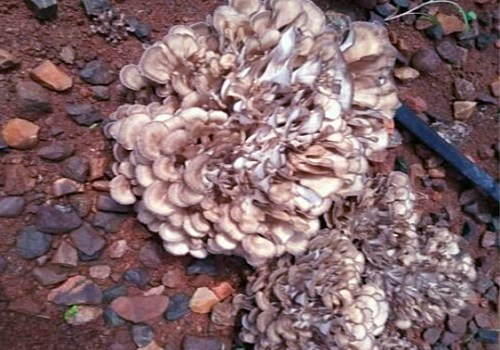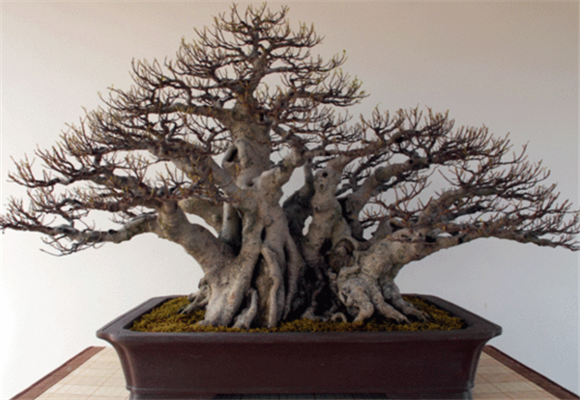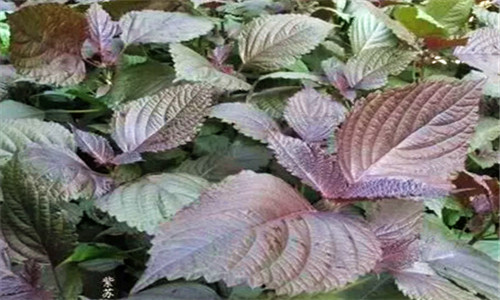How to plant Grifola frondosa? Summary of six high-yield cultivation techniques of Grifola frondosa
Grifola frondosa, commonly known as "dance mushroom", is a mushroom for both food and medicine. It is often wild around chestnut trees in summer and autumn. So how to plant Grifola frondosa? What are the environmental requirements for the growth of Grifola frondosa? The following is to introduce the six key points of high-yield cultivation techniques of Grifola frondosa.

What are the environmental requirements for the growth of Grifola frondosa?
1. In the artificial cultivation of nutritious Grifola frondosa, the requirements of nutrition (carbon source, nitrogen source, mineral elements and vitamins) are not much different from those of Lentinus edodes, mushroom and other sapwood rot bacteria.
two。 The growth temperature of Grifola frondosa mycelia is 5 ℃-35 ℃, and the optimum temperature is 25 ℃-30 ℃. The optimum primordium formation temperature is 15 ℃-25 ℃ and 20 ℃. The optimum temperature for fruiting body development was 18 ℃.
3. The optimum water content of water and humidity on sawdust medium is 50% Mel 55%, and the water content of mycelium growth stage is 60% Mel 65%. Humidity management is basically the same as other edible fungi.
4. The light production of Grifola frondosa should be illuminated from the initial stage of mycelium culture, the light intensity of 50 lux in the fruiting body formation stage and 200 lux-250 lux in the fruiting body growth stage, which is too weak and easy to form deformed mushroom.
5. The oxygen demand of Grifola frondosa is higher than that of other edible fungi. If the ventilation is not good, the fruiting body will be underdeveloped.
6. The pH value of Grifola frondosa hyphae can grow at pH 3.4-7.5, and the optimum ph value is about 6.5.
2. Six high-yield cultivation techniques of Grifola frondosa.
1. Cultivation time
Grifola frondosa is a medium-temperature fungus. According to the suitable temperature of mycelium growth, primordium formation and fruiting body growth, bags are inoculated and cultured in January-March and mushroom production management is carried out from April to June in northern China. Autumn cultivation is generally arranged to make bags in September and mushrooms in November.
two。 Material selection and ingredient
Grifola frondosa is a woody saprophytic fungus, generally using beech, oak and other broad-leaved tree sawdust as the culture material. The particle size is 0.5 mm-2 mm, less than 0.5 mm, the particles are too fine and prone to deformed fruit bodies; more than 2 mm, the particles are too thick and it is easy to reduce the yield, and it is better to add some coniferous sawdust in the right amount (less than 30%). The cultivation effect of short branches after sterilization is also very good. Bagasse and straw can also be used as the main materials for cultivation in the southern region. Nutritional additives are mainly wheat bran, corn meal, corn meal is better, with 30% wheat bran + 70% corn meal effect is also very good. The amount of nutrition generally accounts for 20% of the total dry material weight, 30% of the total dry material weight, excessive addition of nutrition is prone to deformed mushrooms.
Medium formula: ① sawdust 73%, wheat bran 10%, corn meal 15%, sugar 0.8%, gypsum 1.1%, calcium superphosphate 0.1%, water content 64%, ph 6.5. ② sawdust 38%, cottonseed hull 30%, wheat bran 7%, corn meal 15%, sugar 1%, gypsum 1%, water content 64%, ph 6.5. ③ sawdust 30%, cottonseed hull 30%, wheat bran 7%, corn meal 13%, sugar 1%, gypsum 1%, fine soil 18%, water content 64%, ph 6.5.
3. Mixing, bagging, sterilization, inoculation
① mixture: the raw material is called sufficient according to the formula, the dry material is mixed evenly first, the sugar is dissolved in water and then mixed well, and the water content can be dripped with 1-2 drops in the finger seam of the hand. Ph is measured with indicator, superacid plus lime, peralkali and calcium superphosphate to adjust ph to 6.5.
② bagging: 17 cm 33 cm 0.004 cm or 15 cm 30 cm 0.004 cm polypropylene bags. When loading, it is required to be tight and loose on the outside, tight on the outside and loose on the inside, and the whole barrel should not be too tight. The mouth of the bag is sealed with a trumpet ring or sponge plug, or with a stapler.
③ sterilization: sterilization immediately after bagging. During sterilization, the temperature was raised to 100 ℃ as soon as possible, atmospheric pressure sterilization was 100 ℃, maintained for 8 hours-10 hours, autoclaved sterilization was 121 ℃, kept 1.5 hours-2 hours. After sterilization, you need to wait until the temperature drops below 40 ℃ before opening the sterilization box, take out the bacteria bag and put it in a clean air for cooling.
④ inoculation: inoculation can be carried out when the temperature of the material in the bag drops to 25 ℃, and operate under aseptic conditions, the bacterial bag with ring, with a hole in the middle, put the strain in the hole; the bag without ring, crush the strain and put it on the material surface, it is appropriate to cover the material surface with bacteria, the amount of bacteria needed is 15-20 grams.
4. Bacteriological period management
① temperature: 25 ℃-28 ℃ in the initial stage (from inoculation to mycelium growth), 23 ℃-25 ℃ in the middle stage (from mycelium growth to penetration), and 22 ℃ in the later stage (after mycelium penetration).
② humidity: 60% in the initial stage, 65% in the middle stage, and 70% in the later stage.
③ ventilation: there is no need to change air in the early stage, but need to change in the later stage, pay attention to control the concentration of carbon dioxide.
④ illuminance: dark culture is better in the early and middle stage. If the bag is exposed to normal light during this period, the bag surface will become light brown, the primordium will form slowly, and even can not form the primordium. The early illumination is 10 lux-50 lux, and the later illumination is 50 lux-100 lux.
After inoculation, it was moved to the culture room for dark culture at room temperature of 28 ℃. The bag was discharged at an interval of 3 cm-4 cm to ensure good ventilation and good heat dissipation. About 15 days after inoculation, the mycelium growth and respiration increased, the feed temperature increased by 2 ℃-3 ℃, and the culture room temperature decreased by 3 ℃ to 25 ℃. After the mycelium basically penetrated, the room temperature was reduced to about 22 ℃ to avoid excessive mycelium growth and insufficient stamina. Humidity is maintained at 60% in the early stage, high yield and less pollution in the early stage, and 70% humidity in the later stage, which is conducive to the formation of primordia. In the later stage of culture, given a certain amount of light (about 50 lux), mycelium bundles will form on the surface of the culture material, showing a steamed bread-like bulge, the raised part will produce wrinkles, and gradually change from grayish white to dark brown, with water droplets. at this time, it is appropriate to move the bacterial bag into the mushroom, if you move into the mushroom too early, it will cause bacterial contamination and decay on the surface of the primordium. If the water droplets in the wrinkled part disappear and then move into the mushroom, it will be too late, which will have an adverse effect on the quality of mushrooms. In order to promote the consistent formation of primordia, variable temperature treatment was carried out at the later stage of culture, that is, cooling for 2 ℃-3 ℃. The mycelium on the surface of the culture material is in the shape of conjunctiva but not in the shape of steamed bread, which may be due to excessive light at the initial stage of culture or hardening of the culture material during sterilization.
5. Mushroom period management
After moving out of the mushroom for 2-3 days, the primordium was formed on the surface of the bag and transferred to the management of mushroom production in time. First of all, the mouth of the bag should be cut off, and several cuts should be made around it (the bottom can be cut into a cross) and discharged into the pre-dug trench in the shed. If the bag is opened completely, the primordium of the surface layer may differentiate into multiple fruiting bodies, resulting in fine fruiting bodies and a decline in quality. Cover the bag with 1 cm-1.5 cm thick granular wet soil. The soil used to cover the soil contains less organic matter, and it is suitable for loam, with a water content of 20% mi 22%, which must be granular, otherwise it will affect the differentiation and growth of the primordium due to poor air permeability. Formaldehyde and dichlorvos are used to sterilize and kill insects before use. Ventilate 3 times a day, but avoid strong winds blowing directly on the mushroom body. Avoid high temperature and high humidity, the temperature should be about 20 ℃, and the air humidity should be controlled at about 85%. The illuminance is controlled at 200 lux-300 lux. Spray water frequently, carefully and evenly to prevent soil cover and mushroom surface from drying. When the mushroom slices are fully differentiated, the illuminance can be increased to 300 lux-500 lux, so that the surface of the cover becomes gray and black, so as to improve the quality of the product. The four environmental factors of temperature, humidity, light and gas should be strictly controlled in the stages of primordium differentiation and fruiting body growth, otherwise malformed mushrooms are easy to occur, resulting in reduced yield.
6. Harvest
When the leaf is fully differentiated, showing an irregular semicircle, it extends upward and around in the form of semi-overlap and grows like a flower, and the edge of the leaf has no gray-white growth ring, and it is picked when it is slightly rolled in. As Grifola frondosa is generally made into thousands of products, it is required to stop spraying water before harvest, cut off the root sediment with a knife immediately after harvest, and remove other sundries from the mushroom body.
Time: 2019-04-06 Click:
- Prev

How much is a banyan tree? How to trim? What if the leaves turn yellow?
Banyan tree, also known as fine-leaf banyan, evergreen, banyan beard, is a tree in Fujian Province, and it is also rated as a city tree by Fuzhou and Ganzhou. The flowering period of banyan tree is from May to June, and it is a kind of bonsai with ornamental value. So, how much is the banyan tree? How to trim? What if the leaves turn yellow? How much is the banyan tree per pot?
- Next

What is the planting method and time of perilla? What are the precautions?
Perilla, also known as laurel, white Su, red Su, etc., has a special fragrance, is a multi-purpose plant, can be used as medicine, oil, spices, food, economic value is very high. China has a long history of planting perilla, perilla has strong adaptability to the environment, so what is the planting method and time of perilla?
Related
- Fuxing push coffee new agricultural production and marketing class: lack of small-scale processing plants
- Jujube rice field leisure farm deep ploughing Yilan for five years to create a space for organic food and play
- Nongyu Farm-A trial of organic papaya for brave women with advanced technology
- Four points for attention in the prevention and control of diseases and insect pests of edible fungi
- How to add nutrient solution to Edible Fungi
- Is there any good way to control edible fungus mites?
- Open Inoculation Technology of Edible Fungi
- Is there any clever way to use fertilizer for edible fungus in winter?
- What agents are used to kill the pathogens of edible fungi in the mushroom shed?
- Rapid drying of Edible Fungi

